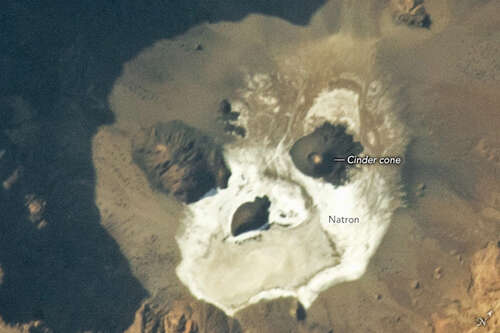
An astronaut aboard the International Space Station snapped this astonishing photo in February of a massive skull peering up from a volcanic pit on Earth. The skull is located 1,000 meters down in Trou au Natron, a volcanic pit and soda lake in northern Chad.
From NASA:
The edge of the “face” is partly formed by shadows cast by the rim of a caldera—a type of volcanic crater formed after an explosive eruption or the collapse of the surface into a partially-emptied magma chamber. The “eyes” and “nose” are cinder cones—steep conical hills built around volcanic vents. The cinder cones are thought to be relatively young in geological terms, likely forming within the past few million years and possibly as recently as the past few thousand years.
The white area around the “mouth” is a mineral crust made of a salt known as natron—a mixture of sodium carbonate, sodium bicarbonate, sodium chloride, and sodium sulfate. It forms as hot spring water pools on the surface and evaporates, and mineral-rich steam rises from the surface of the geothermally active area.

